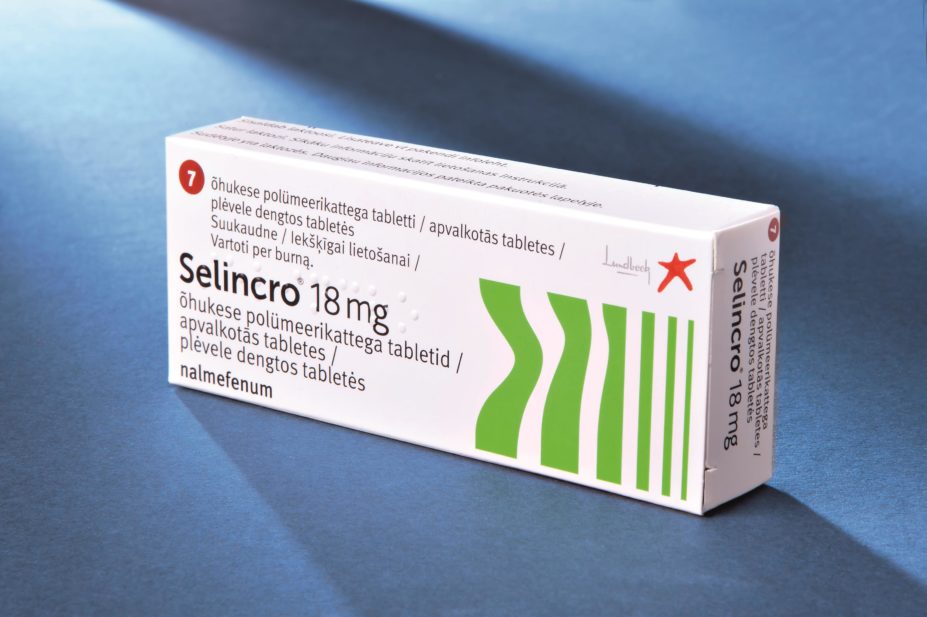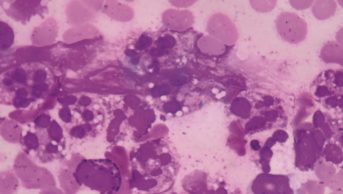
Courtesy of Lundbeck
The licensing and recommendation of a drug used to reduce alcohol consumption in adults with alcohol dependence was based on insufficient evidence to prove its efficacy, according to researchers at the University of Stirling.
Nalmefene, marketed as Selincro by Lundbeck, was approved for use by the European Medicines Agency (EMA) for use in Europe in 2013 and was subsequently recommended for NHS use by the National Institute for Health and Care Excellence (NICE) the following year.

Courtesy of Niamh Fitzgerald
The researchers, led by Niamh Fitzgerald, say the “weak” and “uncertain” evidence used to support nalmefene’s efficacy poses wider questions about the effectiveness of the medicines regulation system
Led by Niamh Fitzgerald, a pharmacist and lecturer in alcohol studies at Stirling University, the researchers carried out a systematic review of the evidence used to support the use of nalmefene and examined the data used by EMA and NICE in reaching their decisions.
The EMA’s assessment of nalmefene was based primarily on three Lundbeck-sponsored trials, say the researchers, adding that the data were potentially biased because the clinical trials lacked pre-specified outcome measures and sensitivity analyses. The evidence review also showed how the trials relied on post-hoc sample refinement and the use of inappropriate comparators.
“We found problems with the registration, design, analysis and reporting of these clinical trials which did not prevent the drug being licensed or recommended for use,” Fitzgerald says.
Reporting their findings in Addiction
[1]
(online, 6 June 2016), the researchers say the evidence used to support nalmefene’s effectiveness is weak and its efficacy uncertain. “This creates dilemmas for primary care clinicians and commissioning organisations where nalmefene has been heavily promoted, and poses wider questions about the effectiveness of the medicines regulation system and how to develop the alcohol treatment evidence base,” they add.
The team points out that health technology assessors have been unable to quantify the exact magnitude of the effect of nalmefene.
They also suggest that naltrexone is a very similar, much cheaper drug, and that any added benefit of nalmefene over naltrexone is unproven. There is also good evidence for acamprosate and accumulating evidence for topiramate, both available as generic drugs, they add.
Andrew Jones, medical director at Lundbeck, says the company disputes these findings. “Nalmefene has demonstrated a positive efficacy/safety profile for dependent drinkers,” he says, adding that the EMA assessed the efficacy of nalmefene from three randomised, double-blind, placebo controlled clinical trials including approximately 2,000 patients.
“Patients enrolled in the studies drank on average 15 units per day (equivalent to approximately 1.5 bottles of wine). Patients treated with nalmefene, combined with psychosocial intervention, were able to reduce their alcohol consumption by more than 40% within the first month, and by more than 60% at six months. This corresponds to an average reduction equal to nearly one bottle of wine per day.”
A spokesperson for the EMA says the agency will look carefully at the University of Stirling study “to determine whether the information contained has an impact on what is known about the balance of the benefits and risks of nalmefene”.
Nalmefene is an opioid receptor modulator, with antagonist activity at the mu and delta opioid receptors, and partial agonist activity at the kappa opioid receptors. The drug is licensed to be used in conjunction with continuous psychosocial support to reduce alcohol consumption in patients diagnosed with alcohol dependence and who have consistently high alcohol consumption levels. The drug is not recommended for use in patients with alcohol dependence who have physical withdrawal symptoms when they stop drinking.
References
[1] Fitzgerald N, Angus K, Elders A et al. Weak evidence on nalmefene creates dilemmas for clinicians and poses questions for regulators and researchers. Addiction 2016. doi: 10.1111/add.13438


